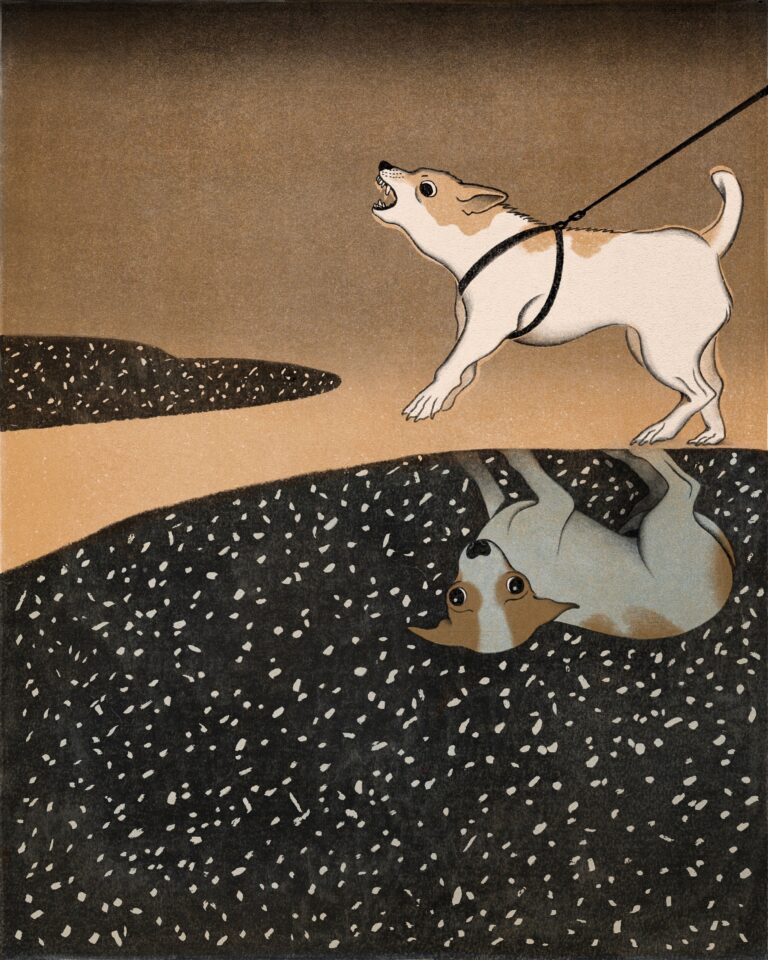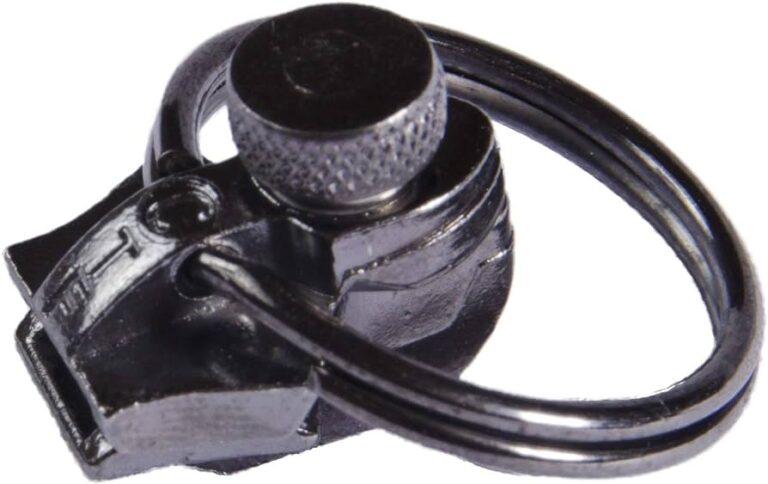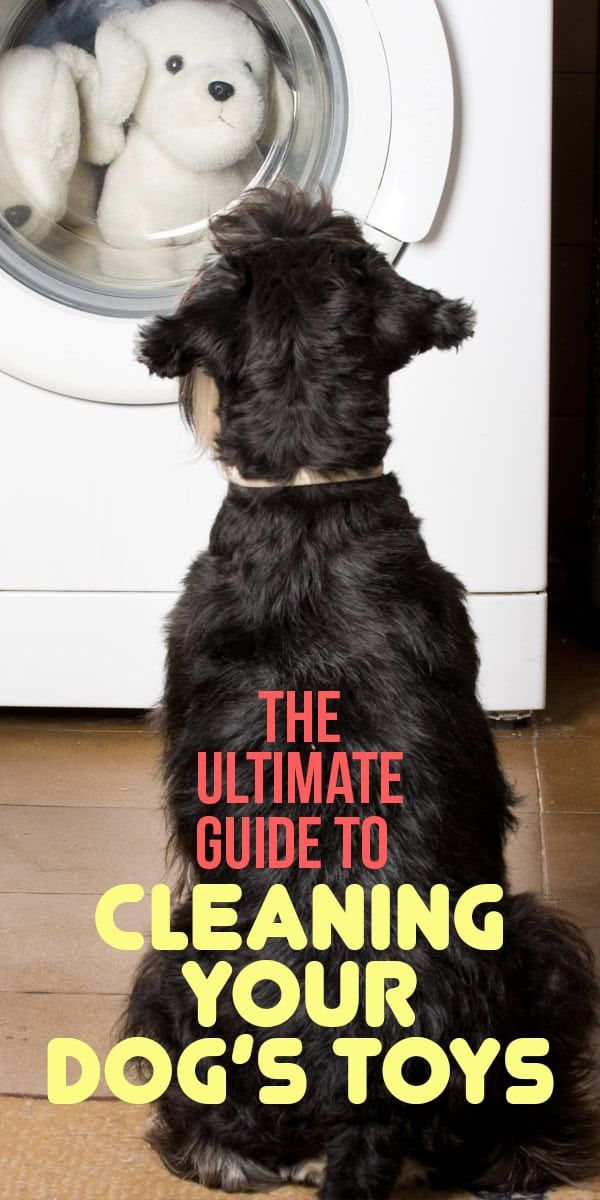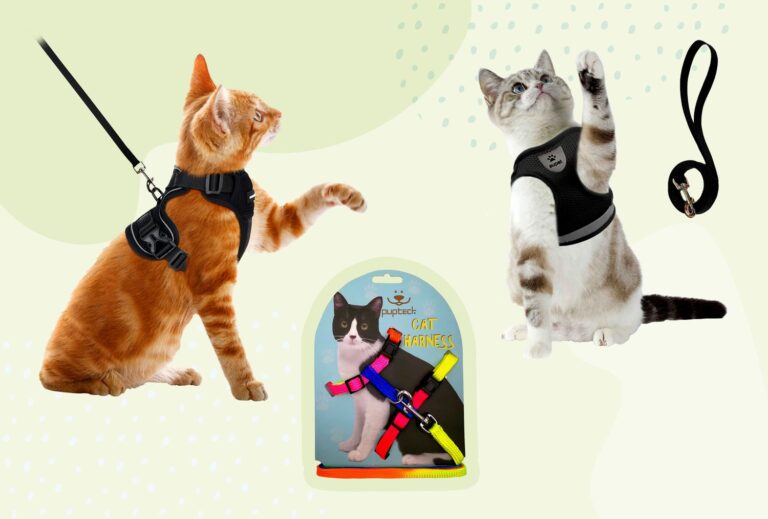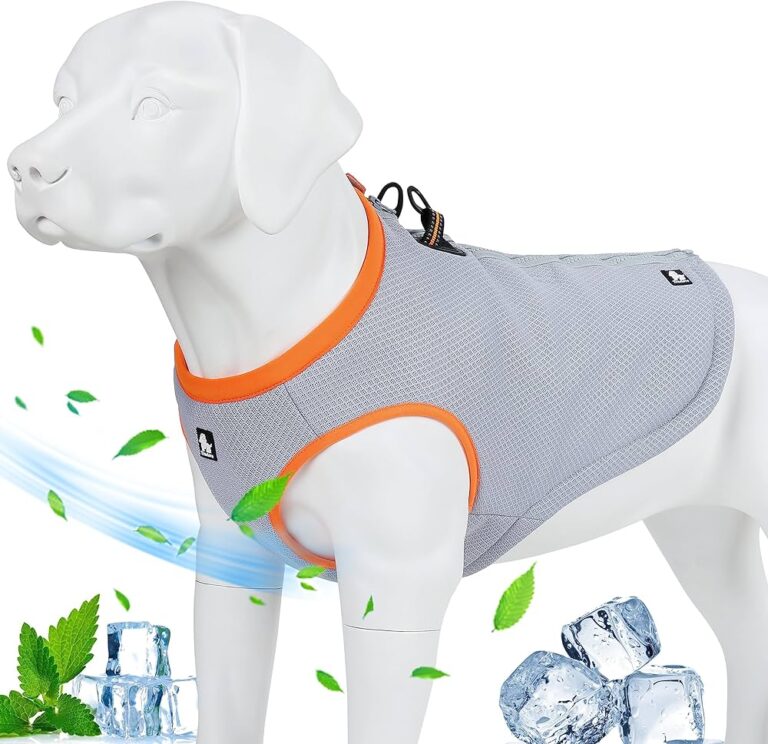Collar vs Harness: Which is Better for Your Puppy?
Last Updated on May 6, 2024 by Petpalace54
When it comes to choosing between a collar or a harness for puppies, it’s better to start with a harness & transition to a collar later. This is because puppies tend to pull strongly while walking on a leash, causing damage to their trachea.
Harnesses reduce the strain on the neck and throat and are recommended by veterinarians for daily walks with pets. As a new puppy owner, it’s important to make the right choice when it comes to selecting the right gear for your furry friend. While collars are a popular choice for dogs & puppies alike, they may not always be the best option. Puppies tend to pull forcefully while learning to walk on a leash, which may cause damage to their trachea if they wear a collar.
Collar vs Harness: Which is Better for Your Puppy? Moreover, collars may also cause discomfort and irritation to a puppy’s neck and throat. On the other hand, harnesses provide a secure fit and evenly distribute pressure, reducing the strain on your puppy’s neck and throat. We will discuss the pros and cons of each and provide you with all the information you need to make an informed decision.
Table of Contents
Why Start With A Harness For Your Puppy
For leash training, it’s better to start with a harness for your puppy rather than a collar. Puppies tend to pull strongly when learning to walk on a leash, & a collar may damage their trachea. Using a harness will reduce strain on your puppy’s neck and make training easier.
When it comes to leash training your puppy, one of the most important decisions you’ll have to make is whether to use a collar or a harness. While both options have their pros and cons, many veterinarians recommend starting with a harness for your furry friend. Here are some reasons why:
Reduced Strain On Neck & Throat
Using a collar for leash training can be harmful to your puppy as it might put pressure on their neck and throat, causing pain and discomfort. A harness, on the other hand, is designed to distribute the pressure evenly across your pup’s chest & shoulders, which reduces the strain on their neck and throat. This makes it a much safer and more comfortable option, especially for younger puppies.
Better Control Over Your Puppy
For pet parents struggling with leash training, a harness offers better control over your puppy’s movement. When you attach the leash to a harness, it becomes easy to guide the pup in the right direction while keeping it close to you. Unlike a collar, you do not have to worry about your puppy slipping out, especially in public places.
Prevents Tracheal Damage
Using a collar while leash training your puppy can lead to tracheal damage, which can be dangerous and painful for your pet. By using a harness, you can prevent any potential damage to the trachea while ensuring that your puppy is comfortable and safe. Harnesses come in different styles, so you can choose one that is both comfortable & fits your puppy’s neck well.
Training Your Puppy With A Harness
A harness is a valuable tool for leash training your puppy, but it’s important to use it correctly. For instance, you should not leave a harness on your puppy for extended periods, as it might cause skin irritation and other health problems. Regular checkups with your vet can help ensure that your pet is comfortable while wearing the harness & that it’s being used appropriately.
Ultimately, starting with a harness is a great way to introduce your puppy to leash training. Not only is it safer & more comfortable for your pet, but it’s also easier for you to control. With the right harness and proper use, you’ll have a well-trained and happy puppy in no time.
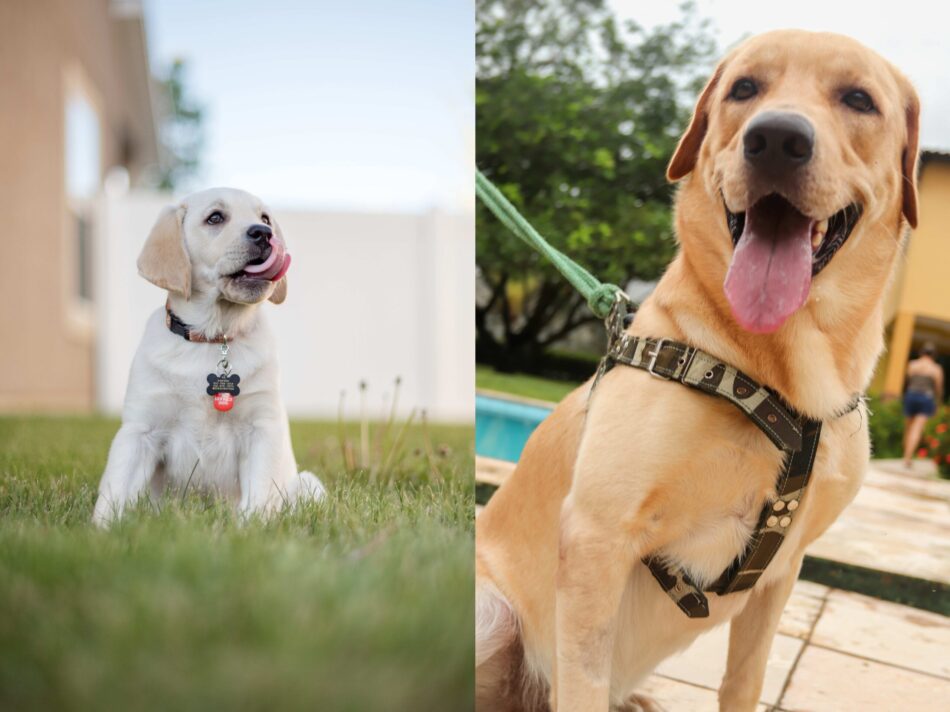
Credit: blog.omlet.us
Comparing Collars & Harnesses For Puppies
Start off by using a harness rather than a collar when training your puppy to walk on a leash to avoid damaging their trachea with excessive pulling. Although puppies’ bodies grow quickly, you can safely introduce them to a harness at any age, but eight weeks is the ideal age to start leash training.
Veterinarians typically recommend daily walks with easy-walk harnesses instead of collars to minimize neck and throat strain on dogs.
Advantages Of Using Collars
Collars are perhaps the most commonly used accessory for puppies. Collars are essential for holding identification tags and have a variety of designs to fit any style. Plus, they are less expensive than harnesses.
Disadvantages Of Using Collars
The biggest drawback of using a collar is that it can put pressure on a puppy’s neck and throat, especially if they tend to pull hard. This can cause damage to the trachea or neck vertebrae. In severe cases, it may even cause choking or fainting.
Advantages Of Using Harnesses
Harnesses are an excellent body-worn accessory for puppies. They come in various designs, including a front-clip harness to reduce pulling, a no-pull harness to discourage pulling, & back-clip harnesses for normal walks. Harnesses are also suitable for puppies prone to trachea injury or those with short noses.
Disadvantages Of Using Harnesses
The only real disadvantage of using harnesses is the cost. They tend to be a bit more expensive than collars. All the same, they are worth the investment if it means avoiding physical harm to your pup.
Types Of Harnesses Available
There are many types of harnesses available for puppies that come in various sizes, shapes, & materials. Here are a few well-known brands to consider:
- Ruffwear
- PetSafe
- Kurgo
- Front Range Harness RuffWear
- PetSafe Easy Walk Dog Harness
- No Pull Dog Harness Rabbitgoo Dog Harness
- Auroth Tactical Anti Pull Dog Harness
- Zee.Dog SofterWalk Harness
- Ruffwear Hi & Light Dog Harness
- Wolfgang Comfort Dog Harness
In conclusion, both collars and harnesses have their advantages. However, to avoid any physical harm that collars may cause, it’s best to start with a harness and move onto a collar later. Make sure to find a well-fitted harness that provides comfort & maximum mobility for your puppy.
Selecting The Best Harness For Your Puppy
It’s best to start your puppy’s leash training with a harness & move on to a collar later, as puppies tend to pull strongly when first learning to walk. This is because a collar might push on your pup’s trachea when it pulls, possibly damaging it.
Veterinarians often recommend using an easy-walk harness instead of a collar for daily walks with dogs.
Selecting the Best Harness for Your Puppy
When it comes to selecting the best harness for your beloved puppy, there are several factors to consider. The right harness will help keep your puppy safe & comfortable while exploring the world. With so many different types of harnesses on the market, it can be challenging to know which one is the right choice for your furry friend. Here, we will cover how to assess the fit, consider the material, & determine the style of the harness to select the best one for your pup. We have also included some top picks for puppy harnesses to make the selection process easier.
Assessing the Fit of the Harness
It’s essential to assess the fit of your puppy’s harness to ensure it’s comfortable. The harness needs to be snug against the body but not too tight. A harness that’s too tight can cause chaffing and discomfort, while a harness that’s too loose can rub or fall off, making your puppy vulnerable. Here are a few things to keep in mind when assessing the fit of your puppy’s harness:
- Check if you can fit two fingers comfortably under the harness between your puppy’s skin and the harness.
- Ensure the harness doesn’t restrict your puppy’s movement or breathing.
- Make sure the harness isn’t too long, and your puppy won’t slip out of it.
Considering the Material of the Harness
The material of the puppy harness is also an essential factor to consider. While some materials are durable and long-lasting, others are soft and comfortable. Choosing the best material depends on your puppy’s size and breed, as well as your specific needs. The most common materials used for puppy harnesses include:
- Mesh: Comfortable and lightweight, mesh harnesses are perfect for small puppies.
- Nylon: Nylon harnesses are durable, easy to clean, and available in various colors and designs.
- Leather: Leather harnesses are strong, long-lasting, and natural. They are also available in a variety of colors and designs.
Determining the Style of the Harness
There are different styles of puppy harnesses, and it’s essential to select the one that’s most suitable for your puppy. For instance, back-clip harnesses are perfect for puppies learning to walk on a leash, while front-clip harnesses prevent pulling. Here are a few popular styles to consider:
- Back-clip harnesses: The leash clip is located on the back of the harness. These are perfect for small breeds or leash training puppies.
- Front-clip harnesses: The leash clip is located on the front of the harness, reducing pulling behavior. These are perfect for larger breeds or those that pull.
- Dual-clip harnesses: These harnesses have clips located both on the front and back of the harness.
Top Picks for Puppy Harnesses
Here are some of the best puppy harnesses to consider when making your selection:
Brand and Product | Description |
Ruffwear Front Range Harness | Durable, perfect for large and active puppies, & available in many colors |
PetSafe Easy Walk Dog Harness | Minimizes pulling, front-clip design, and is easy to put on & adjust |
Rabbitgoo Dog Harness | No pull design, reflective material, & padded design for comfort |
Big Dog Harness | Designed to distribute the weight evenly, perfect for larger breeds |
Annchwool Tactical Dog Harness | Military-style design, adjustable, & perfect for outdoor activities |
In conclusion, selecting the best harness for your puppy requires assessing the fit, considering the material, & determining the style. It’s essential to choose a harness that’s comfortable, durable, and suitable for your puppy’s needs. With the top picks we have provided, you can make an informed decision and ensure your furry friend is always safe and secure.

Credit: www.progressive.com
When To Use A Collar Instead
To prevent any potential harm, it is better to start your puppy’s leash training with a harness and shift to a collar later. Puppies can pull strongly when they learn to walk on a leash, & a collar may damage their trachea when they pull.
Transitioning From A Harness To A Collar
When your puppy is becoming more adjusted to walking with a leash and is pulling less, you might want to transition from a harness to a collar. Collars are typically lighter and less visible on your puppy than a harness, which can be a good fit for puppies who have become used to wearing a harness. However, be sure to supervise your puppy when they’re wearing a collar, especially in the beginning stages.
Using Collars For Identification Purposes
If you’re in need of identification for your puppy, using a collar can be the easiest option. You can easily attach an ID tag to the collar, which can provide your contact information if your puppy goes missing. Plus, collars are often required by law for identification purposes.
When Collars Are More Appropriate
Collars can be more appropriate than harnesses for puppies who are already well-behaved on a leash. In addition, collars can be a good fit for puppies who have trouble adjusting to the fit or feel of a harness. Collars can also be more appropriate for puppies who only need to walk short distances and aren’t prone to pulling on the leash.
Risks Of Using Collars
There are some risks associated with using a collar instead of a harness for your puppy.
- Firstly, if your puppy pulls on the leash, a collar can put pressure on their neck & throat, which can be harmful, especially if they’re still growing.
- Secondly, collars can also become stuck on objects, increasing the risk of choking or injury.
- Therefore, it’s important to only use collars on puppies who are well-behaved and supervised during walks.
Caring For Your Puppy’s Harness Or Collar
Puppies should start their leash training with a harness rather than a collar because they tend to pull strongly. Collars may damage their trachea when they pull. However, it’s important to choose the right fit for their quickly-growing bodies.
Caring for Your Puppy’s Harness or Collar
When considering whether to choose a collar or harness for your puppy, it’s important to take into account how you will care for the chosen item. Both collars and harnesses need proper maintenance to ensure they stay hygienic and functional. In this section, we’ll cover the best ways to take care of your puppy’s collar or harness to keep them safe and comfortable on their walks.
Cleaning Your Puppy’s Harness
- Cleaning your puppy’s harness is important to keep it free from bacteria and odor. It’s recommended to clean it at least once a month, or more often if necessary.
- Start by checking the manufacturer’s instructions for washing and drying the harness, as some may need to be hand-washed and air-dried.
- Once you know the instructions, you can use a mild soap or detergent and warm water to gently scrub the harness straps and attachments. Rinse thoroughly with water and let it air dry.
Maintaining Your Puppy’s Collar
- Maintaining your puppy’s collar involves regular inspections for wear and tear and timely replacements if necessary.
- Collars can become damaged from rough play or wear and tear from outdoor activities. Check the collar for any signs of fraying, weakening, or breakage before each use.
- If you notice any damage, replace the collar immediately. Additionally, you should clean the collar with a mild soap and water to keep it free from unwanted bacteria.
Avoiding Common Issues with Harnesses & Collars
- To avoid common issues with puppy harnesses and collars, it’s important to choose the correct size and fit for your puppy’s body.
- A too-loose or too-tight harness or collar can cause discomfort, chafing, or even injury. Always measure your puppy’s neck and body to ensure a proper fit before choosing a collar.
- For harnesses, measure your puppy’s body to know which size is best for them. If your puppy is still growing, consider an adjustable harness that can be adapted to their size and weight.
- Also, avoid leaving the collar or harness on your puppy for long periods as this can cause skin irritation or chafing.
In Conclusion, taking care of your puppy’s collar or harness is an essential part of keeping your puppy safe, comfortable, and happy on their walks. By cleaning, maintaining, and choosing the correct size and fit for your puppy, you can avoid common issues and ensure your puppy has a positive walking experience. Make sure to follow the manufacturer’s instructions for washing and drying, and regularly check the item for wear and tear. By following these simple tips, your puppy’s collar or harness can last for years and provide them with safety and comfort.

Credit: www.progressive.com
Frequently Asked Questions On Which Is Better For Puppy Collar Or Harness
Should You Use A Collar Or Harness For A Puppy?
As a general rule, it’s best to start with a harness for your puppy’s leash training and switch to a collar later on. Puppies tend to pull strongly when learning to walk on a leash, and a collar may put pressure on their throat and trachea, causing damage.
Veterinarians recommend using an easy-walk harness to reduce strain on the neck and throat during daily walks. Introduce a harness at any age, but the ideal time is around eight weeks when you start taking them for walks. Check the collar’s tightness, as it can cause sores and discomfort if too tight.
Do Vets Recommend Collars Or Harnesses?
Veterinarians recommend harnesses instead of collars for daily walks with pets, particularly dogs. This is because collars can put pressure on a dog’s neck and throat, causing possible damage. It’s better to start leash training with a harness and move on to a collar later as puppies tend to pull strongly when learning to walk on a leash.
What Age Should A Puppy Wear A Harness?
It is ideal to introduce a puppy to a harness when you start walking them at around eight weeks old. Puppies tend to pull strongly when learning to walk on a leash, so it is better to start with a harness before transitioning to a collar.
A harness will reduce the strain on the puppy’s neck & throat, preventing any possible damage that a collar might cause.
Should Puppy Wear Collar All The Time?
No, puppies should not wear collars all the time. It is recommended to start leash training with a harness and move to a collar later, to avoid damage to their trachea from pulling. Check the collar regularly to ensure it’s not too tight & causing discomfort or sores.
Sum Up
Based on the “Collar vs Harness” information presented, it’s clear that using a harness is generally better than a collar for puppies. Not only is it a safer option for your pup’s delicate neck and throat, but it can also prevent pulling and make leash training easier.
As your puppy grows, you can transition to a collar if you prefer, but starting with a harness is a great way to ensure their well-being and comfort. So, if you’re looking for the best option for your furry friend, consider using a harness for your puppy.


